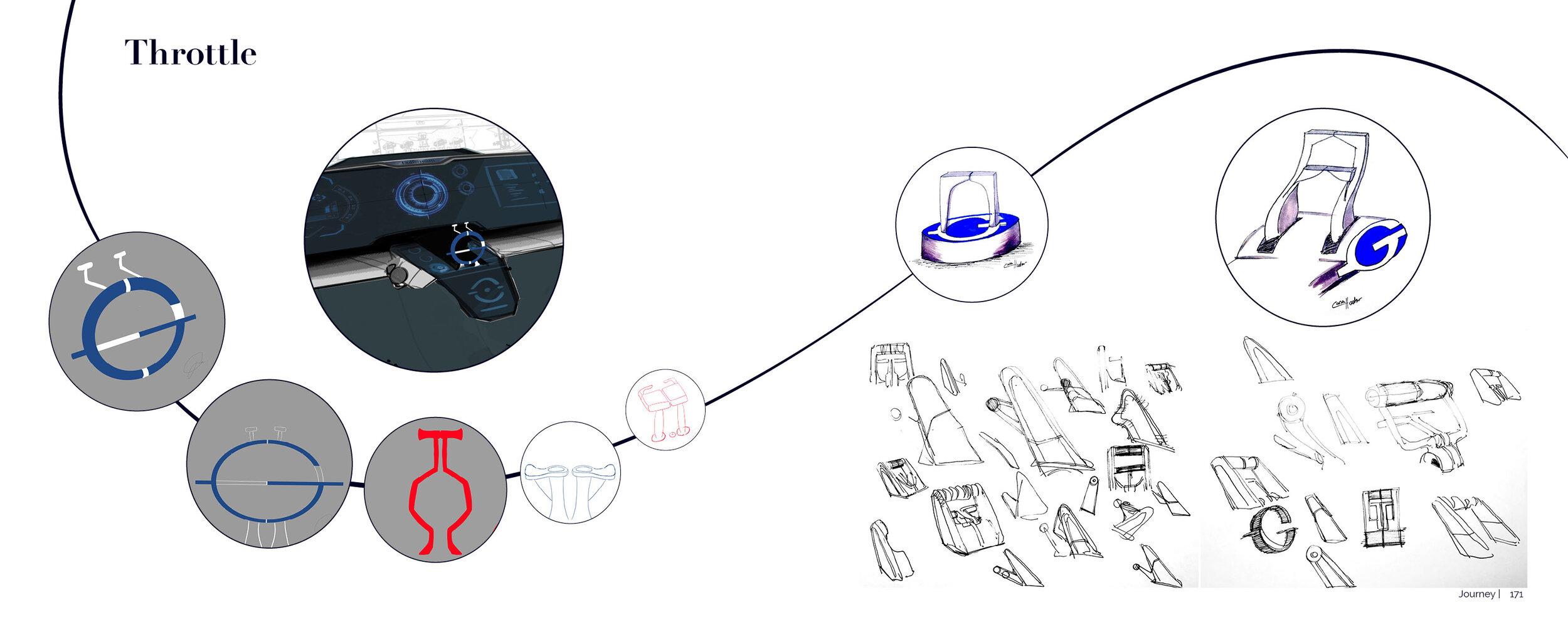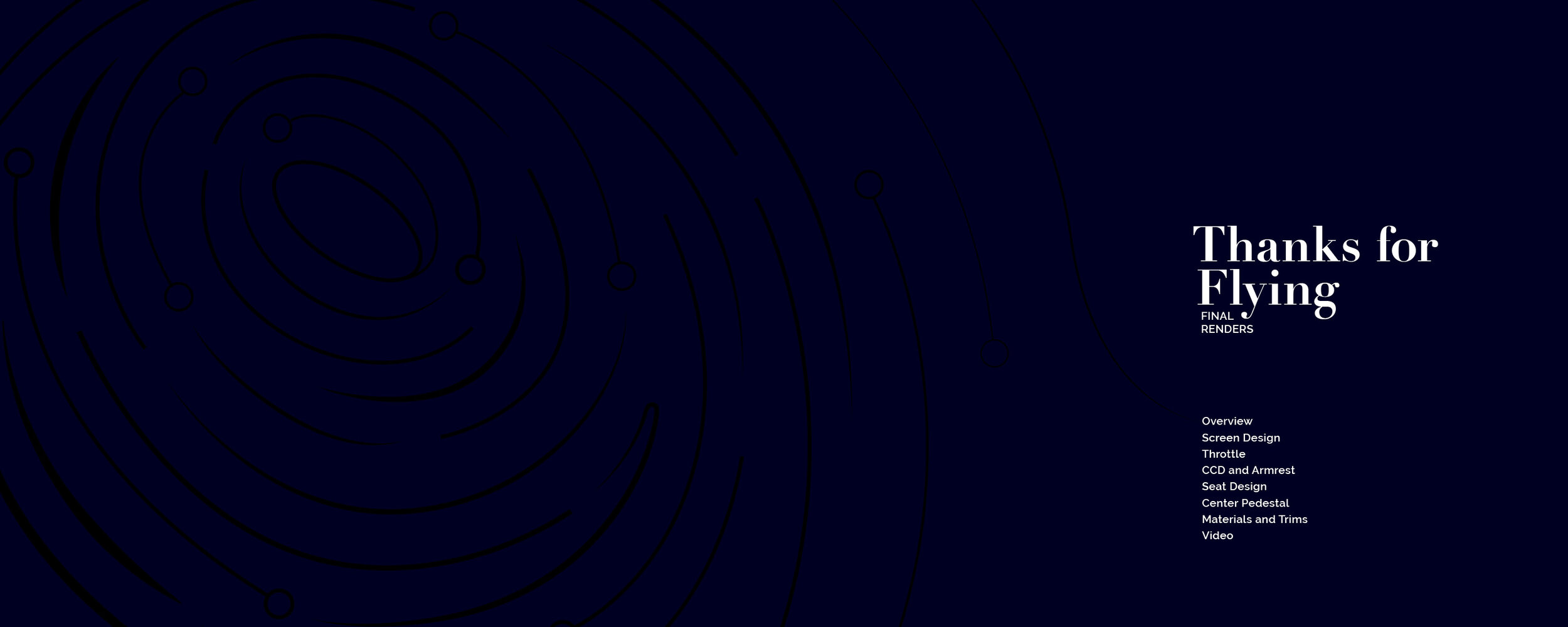Gulfstream Aerospace
FUTURE FLIGHT DECK
Once you have tasted flight, you will forever walk the earth with your eyes turned skywards.
–Unknown Author
My Role
Project Co-Lead
Project Duration
10 Weeks
Problem
The meeting with Gulfstream Aerospace Corporation began with quick introductions then moved to a presentation of Human Factors requirements inside the flight deck by Dr. Konrad Gernot, the Group Head of Human Factors Engineering at Gulfstream. Bethany Davis, Gulfstream’s Director of Flight Capabilities Innovation then gave us a general overview of the brand, insight on the new G700 and their state-of-the-art Symmetry Flight Deck, then finally the project objectives.
To reimagine the Gulfstream flight deck for their future jets, to design, innovate and extrapolate with minimal constraints, and to craft ideas that would change the aircraft industry and a pilot’s experience in the flight deck for the better.
Meet the Team
After our kick-off meeting, we continued to research the Gulfstream brand to get to know the client. Our team consisted of 2 professors and 16 students with expertise in Industrial Design, Service Design, Graphic Design, Interior Design, Design Management, UX Design, Advertising and Branding, Motion Media, Animation, Film and Sound Design.
Coming into this project in the midst of the uncertainty of Covid-19 left us feeling unsure of how this particular SCADPro project would unfold, considering the fact that it involved such a high degree of collaboration. However, we took things as they came, one step at a time. In the next few weeks, Zoom calls were to become the new normal.
Check-In (Project Branding)
Our “Leave Your Mark” design theme was inspired by futurist interfaces and geometric linework. We decided to play off of the look of an individual fingerprint, seeing that Gulfstream has an everlasting impression on not only their clients but on the world as a whole.
Take Off (Secondary Research)
The team started by researching secondary data that could be relevant and useful to the project. We’d been documenting all of our research and process on Miro, a collaborative online “sticky notes” board. After the kick-off meeting with the Gulfstream team, we were able to focus on the specific deliverables that were requested. We immediately turned our research towards the focus areas like the pedestal, side consoles, pilot seating, materials and finishes.
The team met again with Dr. Gernot Konrad the following class period to dive deeper into the human engineering components of the flight deck. In addition to researching Gulfstream’s history and possible competition, the team also looked at other industries for inspiration. This included automotive, yachting, commercial & general aviation, military defense, and even architectural designs. All of this research helped create guidelines for our possible concepts and future questions in our primary research.
In-Flight (Primary Research)
The goal of our primary research was to find data points and insights on the current pain points for Gulfstream pilots. A Likert scale survey was sent out to the Gulfstream team and followed by 13 in-depth pilot interviews. With this information, our team created an affinity map that was used to form our design criteria at the end of this phase.
Journey (Industrial and Interior Design)
Our industrial and interior design team put their heads together to deliver a timeless and sophisticated designs. They began by sketching ideas until they could sketch no more. After receiving feedback from Gulfstream, ideas were iterated and placed into 3D models. Finally, the models were rendered to bring the concepts to life.
Landing (Sound/VR/Animation)
Sound: After hearing that Gulfstream's user interface technologies are all almost 25 years old, we decided to make it our mission to create a faithful redesign of all of the audible alerts that can be heard inside the flight deck. Our goal was to create unique sounds that echo Gulfstream's Color Philosophy. The solution was based on the four waveforms of sound systems, Sine, Triangle, Square and Sawtooth.
VR: We created “Flight Zone,” a solution for communication and audio transmission throughout the Gulfstream flight deck. The “Flight Zone” seat headrest was designed through a joint effort by our sound and industrial design team members. The goal was to meet communication criteria and solve the sound problems discussed in the initial presentation with Gulfstream.
Animation: To make the new flight deck come alive we created an animated graphic that represented Gulfstream: sleek, modern, professional, and fast.
Thanks for Flying
The aviation industry’s vast amount of regulation slows innovation; to help counter this, we were tasked with bringing the flight deck into the future. The driving forces behind our design were clean lines and timelessness. These can be seen and felt with the simple and flowing lines that wrap around the flight deck. Forms and shapes have been reduced for a modern and minimalistic feel, which also provided a spacious and open environment within the flight deck.





































































































